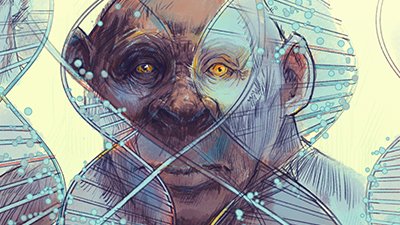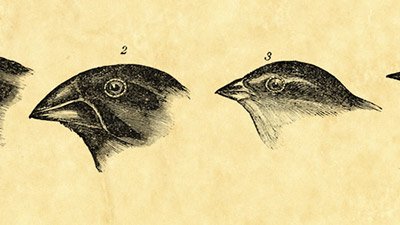
Horse Evolution Mix-up
PhysOrg: “DNA Study Sheds New Light on Horse Evolution” Some argue that the horse offers a “textbook example of evolution.” But does new research undo that claim?
Both evolutionists and creationists recognize that multiple modern “species” can arise from the same ancestral group. For evolutionists, this is the idea of evolution from a single common ancestor. For creationists, this is the idea of variation within a single created kind.
The difference is that evolutionists are prone to viewing multiple species as part of an evolutionary lineage from older and less evolved to younger, more evolved. In human evolution, for example, Homo erectus is supposedly a more ancient, less evolved hominid form, while Homo sapiens is younger and more highly evolved.
Offspring end up with less genetic information than their ancestors, not more.
Creationists, on the other hand, see in-kind differences as just that: morphological, genetic, and behavioral differences explained by adaptation to environments and selective forces. Offspring end up with less genetic information than their ancestors, not more.
The difference in these views is apparent when considering the array of modern and fossil horses. Evolutionists have pieced together fossil horses into a lineage of evolution. Creationists consider most of the various horse fossils to simply have unique characteristics, just as different horses today have unique characteristics. According to creationists, modern horses, zebras, and donkeys are all part of the same original created kind, and their differences reflect selective forces at work since the Flood.
Research published in the Proceedings of the National Academy of Sciences helps confirm the creationist view. Scientists recovered DNA from several fossil specimens that belong in taxonomic family Equidae, which includes both modern and extinct horses, zebras, and donkeys. Previously, most scientists believed these extinct equids were evolutionarily distinct from modern species. Instead, the new study shows that the extinct specimens were merely variations of the creatures that exist today. Examples include:
- The Cape zebra, a large, extinct species of zebra from South Africa, was simply a larger variant of the modern Plains zebra, which is now thought to be “highly variable in both coat colour and size.”
- A species of donkey thought to have lived in Russia recently appears to be related to fossils of a donkey species thought to be extinct for more than a million years.
- A new species of fossil horse from South America was thought to be “part of an ancient lineage from North America,” but genetic testing reveals they are actually in “the modern radiation of equid species.”
Thus, across the three major groups of equids, fossil species thought to be considerably different from modern forms are actually quite similar—variations within the kind rather than less and more highly evolved forms. One of the researchers, Alan Cooper of the University of Adelaide’s Australian Centre for Ancient DNA, explained, “Overall, the new genetic results suggest that we have under-estimated how much a single species can vary over time and space, and mistakenly assumed more diversity among extinct species of megafauna.”
Cooper added, “[A]ncient DNA studies have revealed that the loss of genetic diversity in many surviving species appears to have been extremely severe”—which also confirms the creationist position on kinds losing genetic information over time. He also stated that the research “has important implications for our understanding of human evolution, where a large number of species are currently recognised from a relatively fragmentary fossil record.” Might evolutionists one day change the status of our supposed hominid ancestors from “less evolved” to close kin, as creationists have argued?
For more information:
- Rapid Speciation
- Get Answers: Created Kinds, Genetics, Information Theory, Natural Selection, Speciation
Remember, if you see a news story that might merit some attention, let us know about it! (Note: if the story originates from the Associated Press, Fox News, MSNBC, the New York Times, or another major national media outlet, we will most likely have already heard about it.) And thanks to all of our readers who have submitted great news tips to us.
(Please note that links will take you directly to the source. Answers in Genesis is not responsible for content on the websites to which we refer. For more information, please see our Privacy Policy.)
Recommended Resources

Answers in Genesis is an apologetics ministry, dedicated to helping Christians defend their faith and proclaim the good news of Jesus Christ.
- Customer Service 800.778.3390
- © 2025 Answers in Genesis





